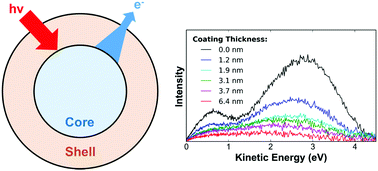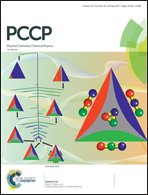Low energy electron attenuation lengths in core–shell nanoparticles†
Abstract
A velocity map imaging spectrometer is used to measure photoemission from free core–shell nanoparticles, where a salt core is coated with a liquid hydrocarbon shell (i.e. squalane). By varying the radial thickness of the hydrocarbon shell, electron attenuation lengths (EALs) are determined by measuring the decay in photoemission intensity from the salt core. In squalane, electrons with kinetic energy (KE) above 2 eV are found to have EALs of 3–5 nm, whereas electrons with smaller KE (<2 eV) have significantly larger EALs of >15 nm. These results (in the context of other energy-resolved EAL measurements) suggest that the energy dependent behavior of low energy electrons is similar in dielectrics when KE > 2 eV. At this energy the EALs do not appear to exhibit strong energy dependence. However, at very low KE (<2 eV), the EALs diverge and appear to be extremely material dependent.



 Please wait while we load your content...
Please wait while we load your content...